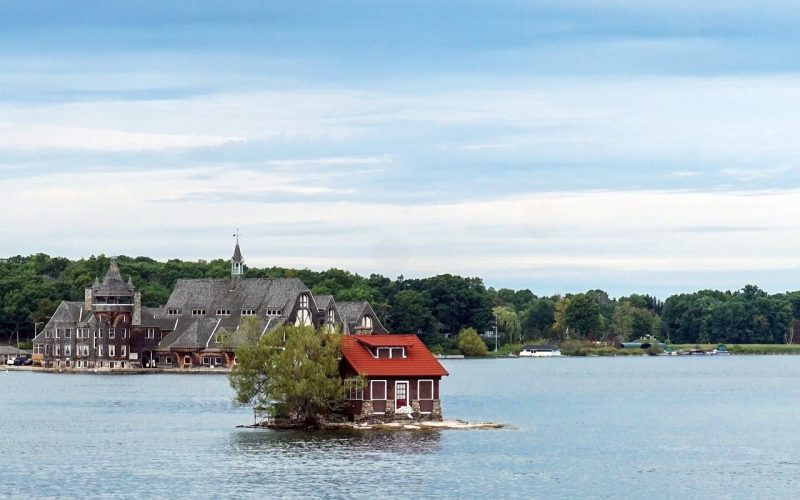Picture this: you’re scrolling through Instagram, mesmerized by those perfectly curated tiny house photos, when reality hits.
Where exactly can you legally park that dream home on wheels? The tiny house movement has exploded across America, but navigating the maze of zoning laws, building codes, and municipal regulations can feel overwhelming.
Here’s the thing—more states are embracing tiny house living than you might think.
From the progressive cities of California to the rural counties of Montana, opportunities for legal tiny home living are expanding rapidly.
Whether you’re drawn to the financial freedom, environmental benefits, or simply the appeal of minimalist living, understanding what states allow tiny houses is your first step toward making this lifestyle a reality.
In this comprehensive guide, you’ll discover which states have rolled out the welcome mat for tiny homes, learn about specific regulations in each area, and get practical insights to help you choose the perfect location for your downsized dream.
California – Cities like Fresno, Los Angeles, and San Diego allow tiny homes on wheels and as ADUs
California leads the charge in tiny house acceptance, though don’t expect uniform rules across the Golden State. The landscape here is as varied as the terrain itself.
Los Angeles made headlines in 2017 when it began allowing tiny houses on wheels as secondary dwelling units, provided they meet specific safety standards. You’ll need to navigate the city’s ADU (Accessory Dwelling Unit) regulations, which require utilities hookups and compliance with building codes. The process isn’t necessarily simple, but it’s definitely doable.
San Diego takes a slightly different approach, focusing heavily on tiny homes as solutions to housing shortages. Several neighborhoods have embraced tiny house villages, particularly for addressing homelessness. If you’re considering San Diego, research specific community developments that welcome tiny homes rather than going it alone.
Fresno offers some of the most straightforward tiny house regulations in California. The city allows tiny homes on foundations as ADUs and has been relatively welcoming to tiny house communities. Rural areas outside Fresno provide even more flexibility, especially if you’re looking for larger lots with fewer restrictions.
One challenge you’ll face throughout California is the state’s stringent building codes. Your tiny house will need to meet safety requirements that can add complexity and cost to your build. However, the trade-off is living in a state with incredible weather, diverse landscapes, and a culture that increasingly values sustainable living.
Oregon – Portland and other cities are leaders in tiny house acceptance
Oregon didn’t just jump on the tiny house bandwagon—it helped build it. Portland has become synonymous with progressive tiny house policies, making it one of the most supportive cities in the nation.
Portland’s approach centers on addressing housing affordability while embracing alternative living solutions. The city allows tiny houses as ADUs on existing residential lots, and several neighborhoods have seen tiny house villages emerge as legitimate housing options. What sets Portland apart is its willingness to work with tiny house advocates to create practical solutions rather than roadblocks.
Beyond Portland, cities like Eugene and Bend have adopted tiny-house-friendly policies. Eugene allows tiny homes on foundations as ADUs, while Bend has been exploring tiny house villages as affordable housing solutions. The key throughout Oregon is understanding that most regulations focus on tiny homes as permanent dwellings rather than temporary accommodations.
Oregon’s building codes are generally more flexible than California’s, but you’ll still need to meet basic safety requirements. The state’s emphasis on environmental sustainability aligns perfectly with tiny house living, and you’ll find a supportive community of like-minded individuals throughout the region.
Washington – Seattle and other areas have legalized tiny houses as both primary and secondary dwellings
Washington State has embraced tiny houses with remarkable enthusiasm, particularly in urban areas grappling with housing shortages. Seattle stands out as one of the few major cities where tiny houses can serve as primary residences under certain conditions.
Seattle’s regulations allow tiny houses on wheels as primary dwellings in specific zones, provided they’re connected to utilities and meet safety standards. The city has also been supportive of tiny house villages, particularly those addressing homelessness. If you’re considering Seattle, research the specific zoning requirements for your desired neighborhood.
Other Washington cities like Spokane and Tacoma have followed Seattle’s lead, though with varying degrees of flexibility. Rural areas throughout Washington offer even more opportunities, especially in counties with relaxed zoning laws. The state’s natural beauty and outdoor recreation opportunities make it particularly appealing for tiny house enthusiasts.
Washington’s building codes tend to be reasonable, and the state government has shown willingness to adapt regulations as the tiny house movement evolves. You’ll find an active tiny house community throughout the state, with regular meetups and resources for newcomers.
Texas – Austin, Spur (self-declared tiny house capital), and other towns welcome them
Everything’s bigger in Texas—except when it comes to houses, apparently. The Lone Star State has surprised many with its embrace of tiny house living, particularly in progressive cities and rural communities.
Austin leads Texas in tiny house acceptance, allowing tiny homes as ADUs and in specific developments. The city’s focus on keeping Austin weird extends to housing options, and several tiny house communities have emerged throughout the metropolitan area. Austin’s regulations are relatively straightforward, though you’ll need to navigate the city’s permitting process.
Spur, Texas, made national headlines by declaring itself America’s first tiny house-friendly town. This small community actively courts tiny house residents, offering simplified regulations and a welcoming attitude. While Spur is rural and remote, it represents the kind of forward-thinking approach that’s spreading throughout Texas.
Other Texas cities like Dallas and Houston are gradually warming up to tiny houses, primarily as solutions to housing affordability challenges. Rural areas throughout Texas offer tremendous opportunities, especially if you’re looking for larger lots and fewer restrictions.
Texas building codes vary by municipality, but generally offer more flexibility than coastal states. The state’s emphasis on property rights and individual freedom aligns well with tiny house living, though you’ll want to research specific local regulations.
Colorado – Several towns like Durango and Park County are open to tiny homes
Colorado’s rugged landscape and outdoor lifestyle make it a natural fit for tiny house living. The state has been gradually embracing tiny homes, particularly in mountain communities and rural areas.
Durango has become a poster child for tiny house acceptance in Colorado. The city allows tiny homes on foundations as ADUs and has been supportive of tiny house developments. Durango’s appeal extends beyond regulations—the area offers incredible outdoor recreation opportunities and a community that values sustainable living.
Park County, which includes areas around Fairplay and Alma, has adopted some of Colorado’s most flexible tiny house regulations. The county allows tiny homes on wheels with proper permits, and the rural setting provides privacy and space that urban areas can’t match. Keep in mind that mountain living comes with unique challenges, including weather extremes and limited services.
Other Colorado communities like Boulder and Fort Collins have been exploring tiny house options, though regulations vary significantly. The state’s building codes can be strict, particularly regarding foundation requirements and utility connections, but the trade-off is living in one of America’s most beautiful states.
Florida – Cities like Sarasota, St. Petersburg, and Orlando are tiny-home friendly
Florida’s year-round warm weather and lack of state income tax make it attractive for tiny house living, though the regulatory landscape varies dramatically by location.
Sarasota has emerged as one of Florida’s most tiny-house-friendly cities, allowing tiny homes as ADUs and supporting tiny house communities. The city’s approach focuses on providing affordable housing options while maintaining neighborhood character. Sarasota’s coastal location adds appeal, though you’ll pay premium prices for desirable areas.
St. Petersburg has been gradually embracing tiny houses, particularly as solutions to housing shortages. The city allows tiny homes in specific zones and has been supportive of innovative housing developments. St. Pete’s vibrant arts scene and urban amenities make it attractive for younger tiny house residents.
Orlando’s approach to tiny houses has been more cautious, but the city has shown increasing openness to alternative housing solutions. Focus on researching specific neighborhoods and developments rather than citywide policies.
Florida’s building codes present unique challenges, particularly regarding hurricane resistance and flood management. You’ll need to ensure your tiny house meets strict wind load requirements and consider elevation requirements in flood-prone areas.
North Carolina – Asheville and other towns have zoning laws that support tiny living
North Carolina offers a compelling combination of mountain beauty, reasonable cost of living, and increasingly supportive tiny house regulations. Asheville leads the state in tiny house acceptance, but opportunities exist throughout the region.
Asheville’s approach to tiny houses reflects the city’s progressive values and commitment to affordable housing. The city allows tiny homes as ADUs and has been supportive of tiny house villages. Asheville’s mountain setting and vibrant arts scene make it particularly attractive for creative individuals seeking alternative living arrangements.
Beyond Asheville, North Carolina communities like Durham and Chapel Hill have been exploring tiny house options. The state’s Research Triangle area offers economic opportunities while maintaining reasonable living costs. Rural areas throughout North Carolina provide even more flexibility, particularly in counties with relaxed zoning laws.
North Carolina’s building codes are generally reasonable, though you’ll need to meet basic safety and utility requirements. The state’s mild climate and natural beauty make it appealing for outdoor enthusiasts, while urban areas offer cultural amenities and job opportunities.
South Carolina – Some municipalities allow tiny homes, especially as ADUs
South Carolina’s approach to tiny houses has been more conservative than neighboring North Carolina, but opportunities exist in progressive municipalities and rural areas.
Charleston has been gradually warming up to tiny houses, particularly as solutions to housing affordability challenges. The city’s historic character and strict preservation requirements can complicate tiny house placement, but ADU opportunities exist in appropriate neighborhoods.
Columbia and Greenville have shown increasing openness to tiny houses, especially in areas zoned for mixed-use development. Focus on researching specific neighborhoods rather than assuming citywide acceptance.
Rural areas throughout South Carolina offer the most flexibility for tiny house living. Counties with relaxed zoning laws provide opportunities for those seeking privacy and space. The state’s mild climate and relatively low cost of living add appeal, though job opportunities may be limited in rural areas.
Georgia – Decatur and Clarkston permit tiny houses; others are following
Georgia’s tiny house movement has been gaining momentum, particularly in metropolitan Atlanta suburbs and progressive small towns.
Decatur, an Atlanta suburb, has become a leader in Georgia’s tiny house acceptance. The city allows tiny homes as ADUs and has been supportive of innovative housing solutions. Decatur’s walkable downtown and proximity to Atlanta make it attractive for professionals seeking alternative living arrangements.
Clarkston, known as the most diverse square mile in America, has embraced tiny houses as solutions to housing challenges facing refugee communities. The city’s approach focuses on providing affordable housing options while maintaining community character.
Atlanta itself has been more cautious about tiny houses, but individual neighborhoods have shown increasing openness. Research specific areas rather than assuming citywide policies. Rural areas throughout Georgia offer more flexibility, particularly in counties with minimal zoning restrictions.
Georgia’s building codes vary by municipality, but generally offer more flexibility than coastal states. The state’s mild climate and relatively low cost of living make it attractive, though summer heat and humidity can be challenging.
Tennessee – Nashville and Knoxville are among the cities exploring tiny home options
Tennessee’s combination of no state income tax, reasonable cost of living, and growing tiny house acceptance make it increasingly attractive for alternative living enthusiasts.
Nashville has been cautiously embracing tiny houses, particularly as solutions to housing affordability challenges. The city’s booming economy and vibrant music scene attract young professionals who might consider tiny house living. Focus on researching specific neighborhoods and ADU opportunities rather than assuming citywide acceptance.
Knoxville has shown more openness to tiny houses, particularly in areas near the University of Tennessee. The city’s smaller size and more relaxed atmosphere provide opportunities for tiny house living, though regulations vary by neighborhood.
Rural areas throughout Tennessee offer tremendous opportunities for tiny house living. Counties with minimal zoning restrictions provide flexibility for those seeking privacy and space. The state’s natural beauty and outdoor recreation opportunities add appeal, particularly in areas near Great Smoky Mountains National Park.
Arizona – Pima County and cities like Tucson allow tiny houses with certain permits
Arizona’s desert landscape and favorable business climate make it attractive for tiny house living, though extreme heat and water scarcity present unique challenges.
Pima County, which includes Tucson, has been relatively welcoming to tiny houses. The county allows tiny homes with proper permits and has been supportive of alternative housing solutions. Tucson’s affordable cost of living and vibrant arts scene make it attractive for retirees and creative individuals.
Rural areas throughout Arizona offer tremendous opportunities for tiny house living. Counties with minimal zoning restrictions provide flexibility for those seeking privacy and space. The state’s dramatic desert landscapes and outdoor recreation opportunities add appeal, though you’ll need to plan for extreme temperatures and limited water resources.
Arizona’s building codes vary by municipality, but generally focus on safety and utility requirements. The state’s lack of humidity makes tiny house living more comfortable than in southeastern states, though summer heat can be intense.
Nevada – Las Vegas and other areas are open to tiny homes, especially in rural zones
Nevada’s business-friendly environment and lack of state income tax make it attractive for tiny house living, though opportunities vary significantly between urban and rural areas.
Las Vegas has been gradually embracing tiny houses, particularly as solutions to housing affordability challenges. The city’s regulations focus on safety and utility requirements, though zoning restrictions can be complex. Las Vegas’s entertainment industry and growing tech sector provide job opportunities for tiny house residents.
Rural areas throughout Nevada offer tremendous opportunities for tiny house living. Counties with minimal zoning restrictions provide flexibility for those seeking privacy and space. The state’s dramatic desert landscapes and proximity to outdoor recreation areas add appeal, though you’ll need to plan for extreme temperatures and limited services.
Nevada’s building codes vary by municipality, but generally offer more flexibility in rural areas. The state’s dry climate makes tiny house living more comfortable than in humid regions, though summer heat can be intense.
Idaho – Some counties allow tiny houses with lenient rules
Idaho’s rugged beauty and independent spirit make it a natural fit for tiny house living, particularly in rural areas with relaxed zoning laws.
Boise has been cautiously exploring tiny house options, particularly as solutions to housing affordability challenges. The city’s growing tech sector and outdoor recreation opportunities attract young professionals who might consider tiny house living. Focus on researching specific neighborhoods and ADU opportunities.
Rural areas throughout Idaho offer tremendous opportunities for tiny house living. Counties with minimal zoning restrictions provide flexibility for those seeking privacy and space. The state’s natural beauty and outdoor recreation opportunities add appeal, particularly for those seeking an off-grid lifestyle.
Idaho’s building codes vary by municipality, but generally offer more flexibility in rural areas. The state’s harsh winters require careful planning for heating and insulation, though the trade-off is living in one of America’s most beautiful states.
Michigan – Detroit and other cities allow tiny houses under pilot programs
Michigan’s industrial heritage and economic challenges have created opportunities for innovative housing solutions, including tiny houses.
Detroit has been experimenting with tiny houses as solutions to urban blight and housing affordability challenges. The city’s pilot programs focus on specific neighborhoods and developments, though opportunities exist for individual tiny house placement. Detroit’s low cost of living and growing tech sector make it attractive for entrepreneurs and creative individuals.
Other Michigan cities like Grand Rapids and Ann Arbor have been exploring tiny house options, though regulations vary significantly. The state’s Great Lakes region offers natural beauty and outdoor recreation opportunities that complement tiny house living.
Michigan’s building codes can be strict, particularly regarding foundation requirements and utility connections. The state’s harsh winters require careful planning for heating and insulation, though the trade-off is living in an area with incredible natural beauty and affordable living costs.
Massachusetts – Some towns permit tiny homes as ADUs or seasonal dwellings
Massachusetts’s high cost of living and limited available land make tiny houses an attractive option, though regulations vary significantly by municipality.
Boston has been cautiously exploring tiny house options, particularly as solutions to housing affordability challenges. The city’s focus on ADUs provides opportunities for tiny house placement, though regulations can be complex. Boston’s job market and cultural amenities make it attractive despite high living costs.
Rural areas throughout Massachusetts offer opportunities for tiny house living, particularly as seasonal dwellings. Cape Cod and the Berkshires provide natural beauty and outdoor recreation opportunities, though you’ll pay premium prices for desirable locations.
Massachusetts’s building codes are generally strict, reflecting the state’s emphasis on safety and environmental protection. The state’s harsh winters require careful planning for heating and insulation, though the trade-off is living in an area with incredible history and cultural opportunities.
New York – Hudson Valley and parts of upstate NY are more open to tiny homes
New York’s tiny house opportunities focus primarily on rural areas and small towns outside New York City, where land costs and regulations are more manageable.
The Hudson Valley region has been gradually embracing tiny houses, particularly in areas seeking to attract young residents and address housing shortages. Towns like Woodstock and New Paltz have shown openness to alternative housing solutions, though regulations vary significantly.
Upstate New York offers tremendous opportunities for tiny house living, particularly in rural areas with relaxed zoning laws. The state’s natural beauty and outdoor recreation opportunities add appeal, though harsh winters require careful planning.
New York’s building codes vary significantly by municipality, but generally focus on safety and utility requirements. The state’s high taxes and regulatory complexity can be challenging, though opportunities exist for those willing to navigate the system.
New Mexico – Albuquerque and surrounding areas have tiny-home-friendly zoning
New Mexico’s desert landscape and affordable cost of living make it attractive for tiny house living, though opportunities vary by location.
Albuquerque has been gradually embracing tiny houses, particularly as solutions to housing affordability challenges. The city’s regulations focus on safety and utility requirements, though zoning restrictions can be complex. Albuquerque’s growing tech sector and vibrant arts scene make it attractive for creative individuals.
Rural areas throughout New Mexico offer tremendous opportunities for tiny house living. Counties with minimal zoning restrictions provide flexibility for those seeking privacy and space. The state’s dramatic desert landscapes and outdoor recreation opportunities add appeal, though you’ll need to plan for extreme temperatures and limited water resources.
New Mexico’s building codes vary by municipality, but generally offer more flexibility in rural areas. The state’s dry climate makes tiny house living more comfortable than in humid regions, though summer heat can be intense.
Maine – One of the most welcoming states, with statewide recognition of tiny homes
Maine stands out as one of America’s most tiny-house-friendly states, with statewide legislation that recognizes tiny homes as legitimate housing options.
Maine’s approach to tiny houses reflects the state’s independent spirit and practical approach to housing challenges. The state allows tiny homes on wheels as primary residences with proper permits, and municipalities throughout Maine have embraced tiny house communities.
Portland, Maine’s largest city, has been particularly supportive of tiny houses, allowing them as ADUs and in specific developments. The city’s vibrant food scene and coastal location add appeal, though you’ll pay premium prices for desirable areas.
Rural areas throughout Maine offer tremendous opportunities for tiny house living. The state’s natural beauty and outdoor recreation opportunities add appeal, particularly for those seeking an off-grid lifestyle. Maine’s harsh winters require careful planning for heating and insulation, though the trade-off is living in one of America’s most beautiful states.
Vermont – Allows tiny houses, especially on foundations, in many areas
Vermont’s progressive values and environmental consciousness make it a natural fit for tiny house living, though the state’s focus on traditional construction methods can create challenges.
Burlington has been supportive of tiny houses, particularly as solutions to housing affordability challenges. The city’s college town atmosphere and outdoor recreation opportunities make it attractive for young professionals and students. Vermont’s regulations generally favor tiny homes on foundations over those on wheels.
Rural areas throughout Vermont offer opportunities for tiny house living, particularly for those seeking privacy and space. The state’s natural beauty and outdoor recreation opportunities add appeal, though harsh winters require careful planning.
Vermont’s building codes can be strict, particularly regarding foundation requirements and energy efficiency. The state’s emphasis on environmental protection aligns with tiny house values, though compliance can add complexity and cost to your build.
Minnesota – Minneapolis and surrounding areas permit tiny homes as ADUs
Minnesota’s combination of progressive values and practical approach to housing challenges makes it increasingly attractive for tiny house living.
Minneapolis has been supportive of tiny houses, particularly as solutions to housing affordability challenges. The city allows tiny homes as ADUs and has been exploring tiny house villages as affordable housing options. Minneapolis’s job market and cultural amenities make it attractive despite harsh winters.
Other Minnesota cities like Saint Paul and Duluth have shown increasing openness to tiny houses, though regulations vary significantly. The state’s 10,000 lakes and outdoor recreation opportunities add appeal for those seeking an active lifestyle.
Minnesota’s building codes can be strict, particularly regarding foundation requirements and energy efficiency. The state’s harsh winters require careful planning for heating and insulation, though the trade-off is living in an area with incredible natural beauty and progressive values.
Utah – Salt Lake City and surrounding towns are tiny-house supportive
Utah’s business-friendly environment and outdoor recreation opportunities make it attractive for tiny house living, though regulations vary by municipality.
Salt Lake City has been gradually embracing tiny houses, particularly as solutions to housing affordability challenges. The city’s growing tech sector and outdoor recreation opportunities attract young professionals who might consider tiny house living. Utah’s regulations generally focus on safety and utility requirements.
Other Utah cities like Park City and Moab have shown interest in tiny houses, particularly as solutions to seasonal housing challenges. The state’s dramatic landscapes and outdoor recreation opportunities add appeal, though you’ll pay premium prices for desirable areas.
Utah’s building codes vary by municipality, but generally offer reasonable flexibility. The state’s dry climate makes tiny house living more comfortable than in humid regions, though mountain areas can experience harsh winters.
Montana – Recently updated laws to support tiny homes in certain counties
Montana’s vast landscapes and independent spirit make it a natural fit for tiny house living, particularly following recent legislative changes that support alternative housing options.
Montana’s updated laws recognize tiny homes as legitimate housing options, though implementation varies by county. Rural areas throughout Montana offer tremendous opportunities for tiny house living, particularly for those seeking privacy and space.
Cities like Bozeman and Missoula have been exploring tiny house options, though regulations vary significantly. The state’s natural beauty and outdoor recreation opportunities add appeal, particularly for those seeking an off-grid lifestyle.
Montana’s building codes vary by municipality, but generally offer more flexibility in rural areas. The state’s harsh winters require careful planning for heating and insulation, though the trade-off is living in one of America’s most beautiful states.
Ready to take the next step toward tiny house living? Start by researching specific regulations in your target areas, connecting with local tiny house communities, and consulting with professionals who understand the unique challenges of alternative housing.
The tiny house movement continues to grow, and with it, opportunities for legal, sustainable, and financially savvy living across America.








